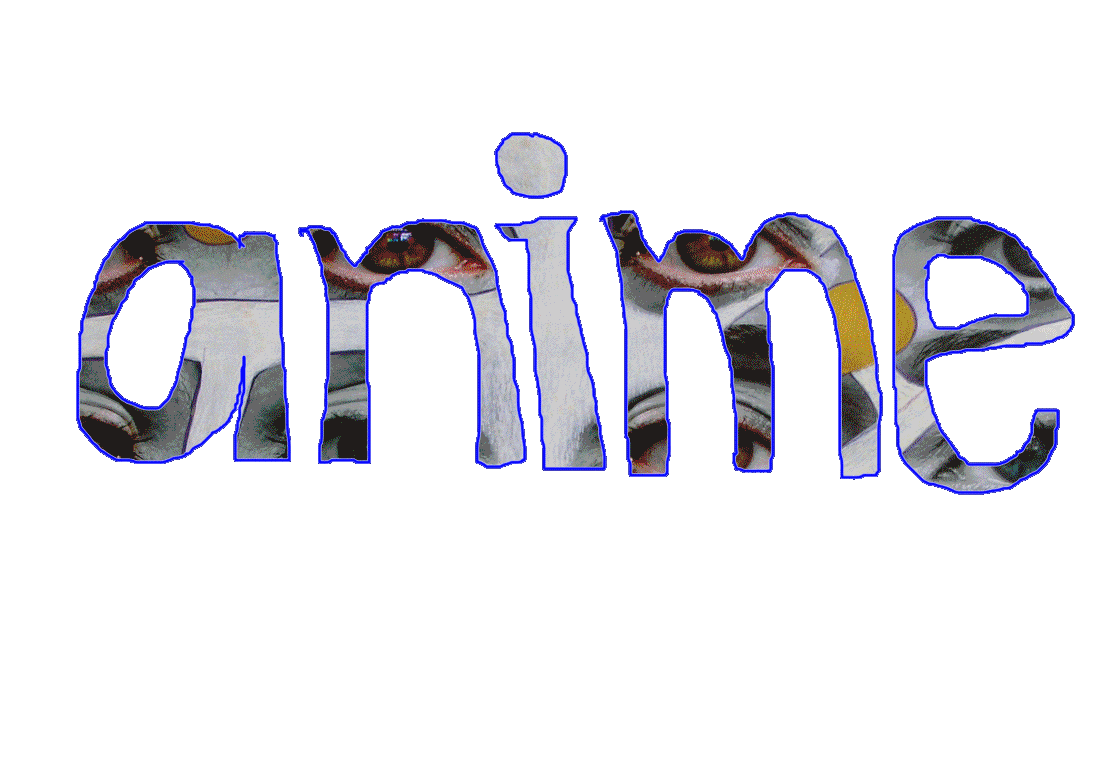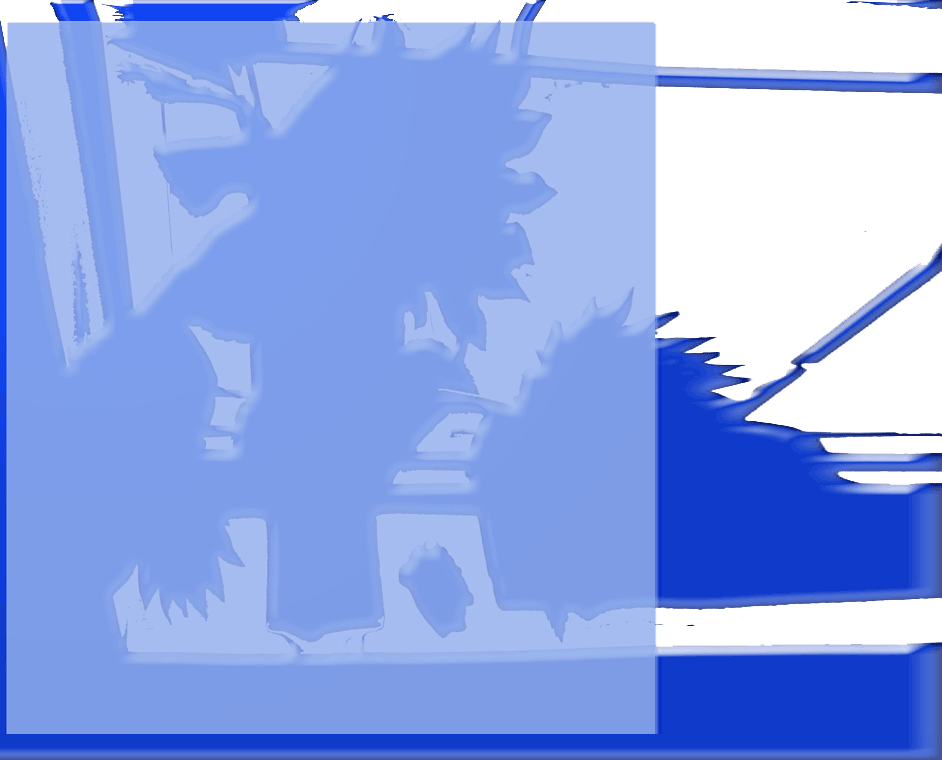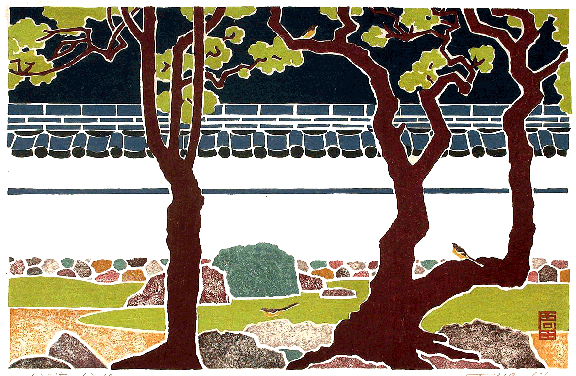
In a paper titled Early Medieval Picture Scrolls as Ancestors of Anime
and Manga, Tsuji Nobuo describes the connection between early medieval
emaki (illustrated hand scrolls) and animated films. He describes
how the treatment of time was developed in illustrated hand scrolls. These
scrolls encompassed narrative painting. The element of time was created as
the scrolls were unrolled by the viewer at his or her chosen pace of reading.
The stories of this early period have a 'fantastic' element. (Nobuo
Tsuji, “Early Medieval Picture Scrolls as Ancestors of Anime and Manga”,
Births and Rebirths in Japanese Art, ed. Nicole Coolidge Rousmaniere, Leiden,
Holland, Hotei Publishing, 2001, 53).
With the evolution of reproducible media, the invention of the moving image
in film and animation resulted in the transformation of manga into
what is now called animé in Japan. In 1917 the first Japanese
animated cartoons were made. Inspired by American and European animators,
they were very short, lasting only from one to five minutes each. A great
deal of the Japanese animators worked independently at home in their studios.
Though Disney and the occupation after WWII had a great influence on early
Japanese animation, this initial imitation of European and American cartoons
did not continue to be the predominant focus of ensuing Japanese animators.
The word anime is originally derived from a French word. In the United
States the word specifically refers to Japanese animation. Unlike the United
States, Japanese anime is not made solely for children. It is constructed
for all ages and walks of life, and for both men and women. Similarly to manga,
anime encompasses a wide range of thematic subjects from fantasy,
to popular culture, to history, action, romance, politics, drama, and erotica.
One of the creators of the fantastic genre in anime was Osamu Tezuka, Japan’s
most well-known comic strip artist (in the 1950’s). Tezuka, a medical
doctor who turned cartoonist, is considered the father of anime.
(Levi, 19-20)
He is the first modern manga artist of Japan, and considered to be
the ‘God of Manga.’ (Gravett,
24) Tezuka tapped into more modern fast paced fantasies as
he organized Japan’s first animation studio. Tezuka made Japanese television
animation quite powerful and popular. He created works that were for a broader
audience and not just children. He passionately believed that manga
and anime are valid parts of culture, similarly to the way Ukiyo
artists considered their works to be part of the culture. Shin-Takarajima
(Gravett, 26)
was his first published manga
book. These books were nicknamed akabon or ‘red books’
because of the red ink on their covers.
Animation is an important medium for our present day art world because it
is the fusion of technology with art, in its embodiment and content. Manga
and anime address our present world where:
"…the
difference between human and machine is increasingly amorphous." (Susan
Napier, Anime. From Akira to Princess Mononoke. Experiencing Contemporary
Japanese Animation, (New York, Palgrave, 2001), 11).
This genre of the mecha or techno-robotic is increasingly important to our present world. As J. P. Telotte comments on science fiction in film:
"In
a near fixation on the artificial, technologized body - the robot, cyborg,
android – the [science fiction] genre has tried to examine our ambivalent
feelings about technology, our growing anxieties about our own nature in an
increasingly technological environment and a kind of evolutionary fear that
these artificial selves may presage our own disappearance or termination."
(Susan Napier, Anime.
From Akira to Princess Mononoke. Experiencing Contemporary Japanese Animation,
New York, Palgrave, 2001, 11).
The first example of a techno-robotic genre animation is the series Astro Boy. Japanese animation was first introduced to America in 1963 with this series, created by Osamu Tezuka in 1951. (Figure here, Gravett, 32-33) Originally a fantastic mecha genre character, Astro Boy was the story of a human child who was killed by in a car accident and whose father, a grief stricken business man, created a robot in his child’s image. The boy robot was unable to substitute for the human son so Astro Boy was rejected by his father/creator and another scientist became his guardian/father. (Fred Patten, Watching Anime, Reading Manga, (Berkeley, California, Stone Bridge Press, 2004),248 and 278).
Akira, one of the most famous manga and anime stories
ever made, embodies the themes of transformation, dystopia and apocalypse.
The story was created by Katsuhiro Otomoin 2001. (Napier,
Anime, 215;
Jean-Marie Bouissou, “Manga goes Global”, The Global Meaning
of Japan Conference, University of Sheffield, March 19-22, 1998, 22. http://www.ceri-sciences-po.org.)
The
story is set in Neo Tokyo in the year 2019, (Tokyo destroyed by a post a WWIII
nuclear event) a chaotic, dystopian city with a corrupt militaristic style
government, involved in a nightmarish experiment, which harnessed the psychic
powers of a group of children as a means to become more powerful. Kaneda and
Tetsuo are adolescent friends and bike gang members. This group of teenagers
encompasses a resistance movement against the oppressive military government,
(reminiscent of the oppressive Tokugawa regime of the Edo period, however,
now we have a different contemporary oppressive government, but the connection
is valid) Tetsuo (who has psychic and transformative powers similar to the
group of children that the military government is experimenting on), is overtaken
by his psychic powers and mutates into a sinister, destructive monster (mitate
of nuclear). Though Tetsuo is powerful, he cannot control his own destiny,
and the result is his ‘destruction’ into another universe. (Napier,
Anime, 39) Akira is a contemporary narrative commenting on
the use of technology. The theme of Akira is science and technology that is
detrimental to life (images here).
Susan Napier alludes to the motorcycle in the film Akira serving as a symbol
of change for this indifferent militaristic state:
"The
emphasis on movement may also evoke a premodern group of marginal, the so-called
ronin (literally “wave man”), masterless samurai who
roamed Japan of the Edo period and who also worked outside the power structure".
(Napier, Anime 41)
Of
note is that these very samurai (along with the newly empowered merchant class
of the Ukiyo) not only became agents of change to their society,
but embodied the quest for meaning in life. This is a meaning that can be
applied to Akira’s teenage motorcycle riding gang members as well (Figures
Akira here).
Mecha a word used to describe the technology in manga and anime,
is used as a metaphor for our contemporary condition is evident in Masamune
Shirow’s Ghost in the Shell (Kokaku Kidotai) manga,
which in 1995 was adapted to anime by Mamoru Oshii. The cyberpunk nature of
Shirow’s work is evident in his use of beautiful cyborg females. In
this film Kusanagi is the name of the female cyborg. Ghost in the Shell
which takes place in 2029 AD is an existential action anime which
asks if it is possible for the soul or spirit (ghost) to exist in a technological
body. It blurs the border between human and machine, and asks questions such
as: is the cyborg human or machine (what is its identity?). What does it mean
to be human in a world dominated by artificiality? Are these technologically
augmented females empowered? Similarly to the use of the female in the Ukiyo
as an agent of transformation, Oshii is:
"…using [Kusanagi] her vulnerable female body and the “feminine” lyrical mode of the film to underlie the vulnerability of all human beings in a world that is increasingly governed by oppressive and incomprehensible forces". (Napier, Anime, 112).
Therefore it can be shown that a possible purpose of anime is to make people think about meaning. (Figures Ghost in the Shell here).
The Spirited Away of Sen and Chihiro is a beautifully rendered Japanese
anime. (Sen to Chihiro no Kamikakusi, The
Spirited Away of Sen and Chihiro by director Hayao Miyazaki 2002).
A ten year old girl named Chihiro Ogino is traveling with her parents (moving
to the suburbs) when they take a detour that they think is an abandoned amusement
park. Instead, they are plummeted into a fantastical world of ghosts, witches
and monsters. Her parents are turned into pigs, and she must transform herself
spiritually in order to save them. The film involves Japanese cultural elements
based on Shinto philosophy and transformation, also present in many works
of the Ukiyo (Figures
Spirited Away) The director, Hayao Miyazaki, was motivated
by the apathy and shallowness of his 10 year old grandchildren and therefore
made a film trying to demonstrate the importance of their cultural heritage
and learning of responsibility. (Patten,
352)
A popular manga and virtual computer game called Final Fantasy
eventually went on to become a state of the art 3D animation. It is called
Final Fantasy – the Spirits Within (Patten,
79). Since it was a collaboration with American animators,
some purists refuse to allow it to be part of the anime world. For
example, here is a quote from a disgruntled gamer on Amazon.com:
“If you are a Final Fantasy fanatic and have played the games since the ones on the Nintendo’s, then this movie will only make you angry……this movie is not a little unlike the game, it is a lot unlike the game. There is rally no fighting, NO summons, and it was done by America, which means that it is not going to be as good as if it was done by final fantasy people.”
Rather than argue this point it will be included because it was (at that moment) the state of the art in terms of animation. Final Fantasy embodies much of the qualities of Spirited Away in its essence, as well as many qualities important to the Ukiyo. (Written and Directed by Hironobu Sakaguchi and Moto Sakakibara (both Japanese) and released by Sony in 2001)
Final Fantasy, the Spirits Within was completely computer generated.
It follows the apocalyptic genre of the earth being a wasteland, as a result
of an invasion by aliens that devour the spirits of living entities. The hero
is a female scientist by the name of Dr. Aki Ross. In the story, humans are
forced to live in constant surveillance and are protected by fragile bubbles
of technology. The plot of the movie entails Aki and her mentor using Earth
spirits to conquer the invading aliens. These earth spirits are present in
all living things. It is indeed influenced by Shinto ideology and can claim
its roots in pre-Modern Japanese culture. (Figures
Final Fantasy). Of added interest is that the strong heroine
is female, and in addition she is a hybrid of two cultures (Japanese and Western).
Final Fantasy is a beautifully rendered animation, but unfortunately was not as successful as it should have been in the US market. This may be a result of the audience still expecting a more western type of science fiction story. The computer gamers were angry because the story was not a reiteration of the Final Fantasy computer games. The two directors were Japanese and Sony was the distributor, but the fact that some of the animators were American pushed this film out of the Japanese anime mode for fanatical purists of anime.
Final Fantasy – the Spirits Within is an example of the interweaving of cultural evolution that is a characteristic and trait of anime and manga and their global impact on western culture. Similarly as the impact of the Ukiyo works had on Japanese society, animation has been and will continue to be a catalyst for cultural cross-fertilization.
(Overlapping
aspects of Ukiyo and the modern mediums of manga and anime
are summarized here:)







